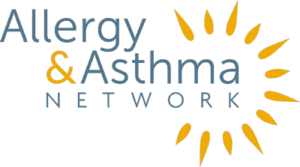Learn about a current research study looking into the use of a biologic, omalizumab to determine if it can aid food allergy oral immunotherapy (OIT).
Food Allergy
Power of Deduction: Food Allergy Tax Breaks
Do you buy special foods because of your food allergy or celiac disease? These food costs can add...
Navigating the Holidays with Asthma and Allergies
What you need to know about COVID-19 risk, asthma and allergies if you host or visit relatives during the holidays.
How to Stay Safe on Halloween with Asthma and Allergies
Learn how you can minimize risk and maximize safety at Halloween when you have a child with a food allergy, asthma or latex allergy.
Why Getting the Flu Shot Is Critical for People with Asthma
If you have moderate to severe asthma, learn why getting your flu shot is especially important due to the ongoing COVID-19 pandemic.
Allergy & Asthma Network Disappointed in FDA Decision on Sesame Allergy
Allergy & Asthma Network issued a statement on FDA’s decision to not ban food companies from adding sesame to food products to get around a federal law.
Global Food Allergy Summit 2022: Your Journey to Living Well with Food Allergies
Join us on Oct 1 and 2 as we learn from global experts about the latest approaches diagnose, manage and treat food allergies.
6 Food Allergy Myths
Learn about common food allergy myths and what the facts are to help you manage food allergies and other adverse reactions to foods.
Calling Anyone Currently Taking Food Allergy OIT!
Alerje Inc., along with National Science Foundation (NSF), has a paid, at-home research study that is focused on your daily treatment experience for up to 90 days.
Why Is Lupin Allergy Becoming More Common?
Have you heard of lupin? Most Americans don’t know a lot about it. That’s likely to change. This little legume is increasingly available to eat or being added to various foods.
Ask the Allergist: What’s the Difference Between Food Allergy and Food Sensitivity?
What should you watch for when identifying if symptoms are food allergy or a food sensitivity? We spoke with allergist Jay Lieberman, MD.
Online Food Allergy Workshops for Middle School Children and Teens
Food allergy coach and consultant Sloane Miller is hosting a 6-week online workshop series for kids with food allergies. Register now!
All About
Food allergies affect 32 million people in the United States, including 13% of children. They occur when the body’s immune system perceives a threat from proteins in food and overreacts to neutralize it. If you have a family history of food allergies, asthma, eczema or pollen allergies, you may be at higher risk for developing food allergy. Food allergies should not be confused with intolerance to food; food allergies can be life-threatening. The most common food allergens are peanut, milk, egg, tree nuts, wheat, soy, sesame, fish and shellfish.
Food allergies require vigilance, especially for children. Small children need careful supervision as they are likely to put any food or object into their mouth; even food left out for a pet can have allergens like dairy, wheat, soy, peanuts, egg or shellfish. Children with severe allergies need to have an emergency plan in place for daycare, school and friends’ homes. Medication and permission forms to administer it, prescriptions, and meetings to discuss accommodations and care should be in place anywhere children are out of their parents’ care.
Up to 30% of eczema patients will develop reactions to certain foods, including gastrointestinal distress, respiratory symptoms like wheezing, difficulty breathing or anaphylaxis, or skin reactions like itching, swelling, and hives. Sometimes eliminating foods from a patient’s diet can improve eczema symptoms, so working with an allergist is key. Skin tests, blood tests and oral food challenges can help identify food allergens. Immunotherapy is emerging as a treatment option for certain food allergens.
People with food allergies need to use caution when dining out. Even getting coffee can pose a risk of cross-contamination with milk and its alternatives. Keeping your order as simple as possible and communicating about the risks you face are all key. Personal “chef cards” that list allergens and severity of reactions, and the need for vigilance in the kitchen to avoid cross-contamination, are recommended when dining out. Chef cards provide the staff with a visual cue to remember the information and avoid potentially fatal mistakes.












